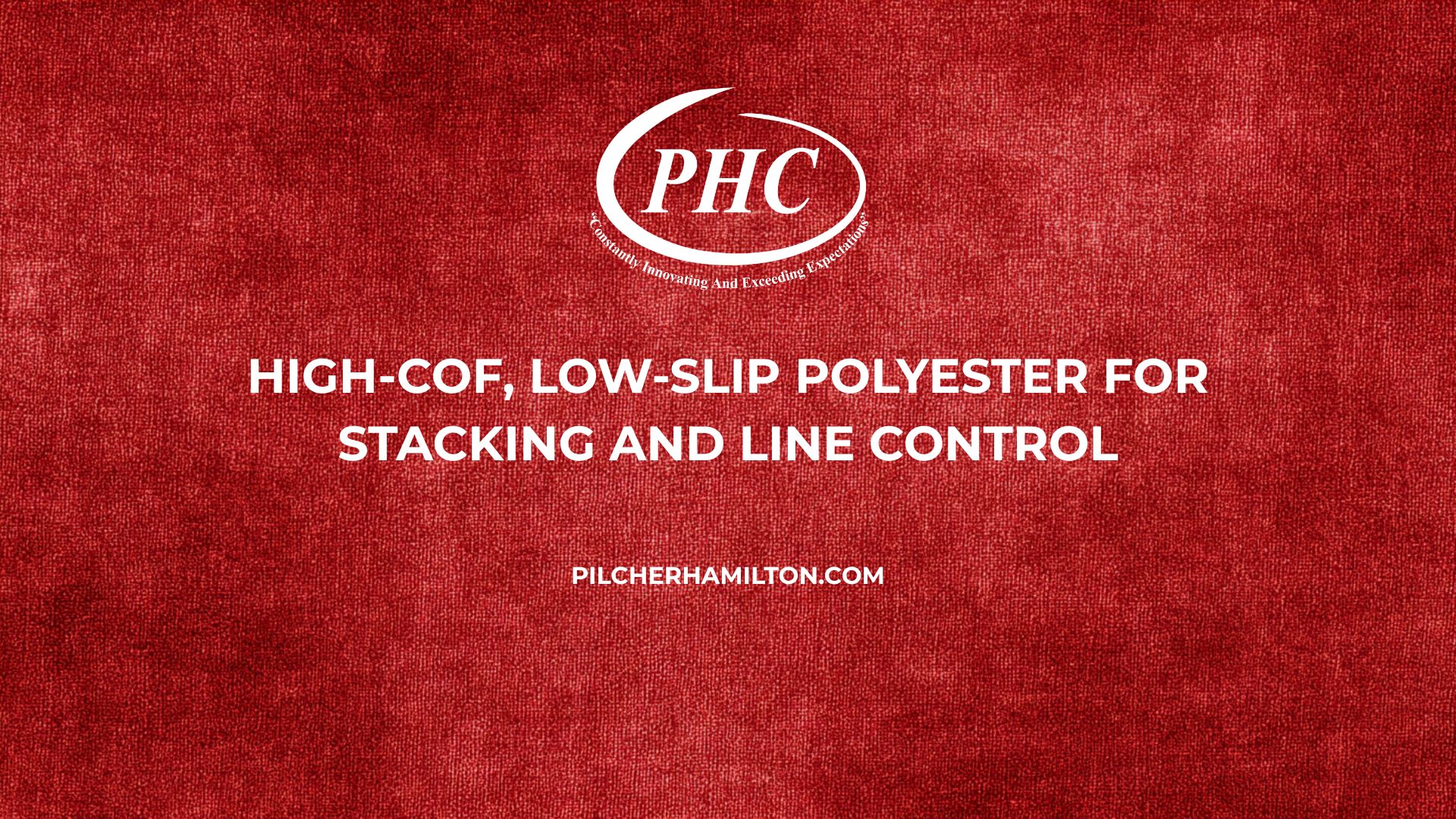Warehouse managers and converters searching “polyester near me” sometimes need films that stay put rather than slide. High‑coefficient‑of‑friction (COF) polyester films offer controlled slip for applications where stacked or layered products must remain stable. By adjusting surface texture or adding anti‑slip additives, manufacturers tailor COF to match handling requirements. This guide explains how high‑COF PET improves stack stability, what COF ranges apply to different applications and how to specify films for safe handling.
Key Takeaways
- COF control – High‑COF PET (COF ≥0.6) prevents slipping during stacking and automated handling.
- Surface treatments – Embossing, micro‑texturing or slip‑additive blends raise COF without sacrificing strength.
- Application‑specific targets – Case packs, tote inserts and pallet liners each require specific COF ranges.
- Testing methods – Standard ASTM D1894 measures static and kinetic COF; values should be specified for both.
- Industrial utility – High‑COF PET is used in gasket spacers, interleaving sheets and anti‑slip pallet covers.
Why High‑COF PET
Standard PET films have COF around 0.3–0.4, adequate for most packaging. However, in stacking or interleaving applications, low slip causes layers to shift or telescoping to occur. High‑COF films incorporate roughened surfaces or slip‑resistant additives to achieve COF up to 0.6–0.8. These films maintain the high tensile strength and dimensional stability of PET but grip surfaces to prevent movement.
Typical COF Targets
Different applications require different COF values. For tote inserts or case pack interleaves, COF around 0.5–0.6 provides grip without causing drag during loading. Pallet liners may require COF ≥0.6 to prevent shifting during transport. Gasket spacers and industrial pads may use COF up to 0.8. It is important to specify both static and kinetic COF, as static COF governs initial grip and kinetic COF affects sliding motion.
Treatment & Texture Options
High‑COF PET films can be produced by embossing one side with a fine texture or by blending anti‑slip additives into the polymer. Embossed textures create micro peaks that increase contact area, while additives create a slightly rough surface. Treatment is typically applied to one side, leaving the other side smooth for printing or lamination. Corona treatment can still be applied to enhance adhesion on the printable side.
Handling & Stacking Guidelines
When selecting high‑COF film, consider the weight of stacked items and the type of surface contact. Films with higher COF may require more force to insert or remove between layers. Testing on actual equipment is recommended. For interleaving, cut sheets should be trimmed with smooth edges to avoid catching. Dust and contamination can reduce COF; keep films clean prior to use.
QA & Test Methods
COF is measured per ASTM D1894 using sled/plate apparatus. Both static (µs) and kinetic (µk) COF are reported. Specify acceptable ranges for both values and test across multiple locations on the film. PHC’s quality lab provides COF data and can adjust formulation to meet target values. Contact us for guidance on testing and specification.
| Application | Static COF | Kinetic COF | Notes |
| Case pack interleaves | 0.50 | 0.45 | Prevents shifting in boxes |
| Tote inserts | 0.55 | 0.50 | Provides grip for returnable containers |
| Pallet liners | 0.60 | 0.55 | Stops slipping during transport |
| Gasket spacers | 0.70 | 0.65 | High grip for industrial assemblies |
| Anti‑slip sheets | 0.60 | 0.55 | Used between metal sheets or parts |
FAQ
Why choose high‑COF PET over adding slip pads? Integrating anti‑slip properties into the film eliminates the need for separate pads or adhesives, reducing complexity and cost.
Does embossing affect clarity? Texturing or embossing can slightly reduce clarity, but high‑COF films are typically used as interleaves or liners where transparency is not critical.
Can high‑COF film be printed? Yes. The smooth side can be treated for printing while the textured side provides slip control.
How is COF specified? Always specify both static and kinetic COF values and the test standard used (e.g., ASTM D1894). Provide acceptable ranges to your supplier.
Where can I find polyester near me with high COF? PHC offers high‑COF polyester films produced locally in Greer with customizable static and kinetic COF values.
Call to Action
Improve stack stability and handling safety with high‑COF PET films from Pilcher Hamilton Corporation. Our specialists will work with you to select textures and additive levels that meet your COF requirements while maintaining film strength. Visit our high‑COF/low‑slip and general purpose industrial pages, or read our article on navigating high‑COF films to learn more. Let your polyester near me search lead to stable solutions.
Serving the USA from Greer – South carolina
850 South Buncombe Road
Greer – South carolina
Contact us via our contact page or check our locations for assistance.

